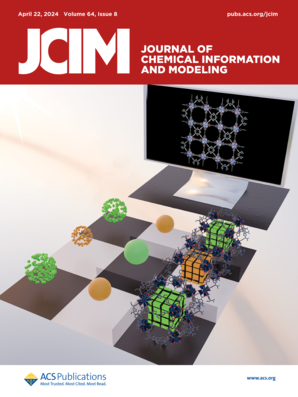Transfer Learning for Predicting ncRNA-Protein Interactions.
IF 5.6
2区 化学
Q1 CHEMISTRY, MEDICINAL
引用次数: 0
Abstract
Noncoding RNAs (ncRNAs) interact with proteins, playing a crucial role in regulating gene expression and cellular functions. Accurate prediction of these interactions is essential for understanding biological processes and developing novel therapeutic agents. However, identifying ncRNA-protein interactions (ncRPI) through experimental methods is often costly and time-consuming. Although numerous machine learning and deep learning approaches have been developed for ncRPI prediction, their accuracy is often limited by the small size of available data sets. To address this challenge, we present Transfer-RPI, a transfer learning-based framework designed to enhance generalization and improve prediction performance through deep feature learning. Transfer-RPI leverages the RiNALMo and ESM models to extract comprehensive features from RNA and protein sequences, respectively. By integrating these rich and informative feature sets, Transfer-RPI fine-tunes the embedded complex interaction patterns, thereby enhancing performance even when trained on small data sets. Our results demonstrate that deep learning architectures augmented with intricate feature representations and transfer learning significantly boost prediction accuracy. Under 5-fold cross-validation, Transfer-RPI outperforms existing methods, achieving accuracies of 80.1, 89.3, 94.3, 94.4, and 95.4% on the RPI369, RPI488, RPI1807, RPI2241, and NPInter v2.0 data sets, respectively. These findings highlight the potential of transfer learning to overcome data limitations and enhance prediction performance. By harnessing advanced feature representations, Transfer-RPI offers a powerful tool for uncovering ncRPI, paving the way for deeper insights into molecular biology and novel therapeutic innovations.预测ncrna -蛋白相互作用的迁移学习。
非编码rna (ncRNAs)与蛋白质相互作用,在调节基因表达和细胞功能中起着至关重要的作用。准确预测这些相互作用对于理解生物过程和开发新的治疗药物至关重要。然而,通过实验方法鉴定ncrna -蛋白相互作用(ncRPI)通常是昂贵且耗时的。尽管已经开发了许多用于ncRPI预测的机器学习和深度学习方法,但它们的准确性通常受到可用数据集规模小的限制。为了应对这一挑战,我们提出了transfer - rpi,这是一个基于迁移学习的框架,旨在通过深度特征学习增强泛化和提高预测性能。Transfer-RPI利用RiNALMo和ESM模型分别从RNA和蛋白质序列中提取综合特征。通过集成这些丰富和信息丰富的功能集,Transfer-RPI微调嵌入的复杂交互模式,从而提高性能,即使在小数据集上训练。我们的研究结果表明,增强了复杂特征表示和迁移学习的深度学习架构显著提高了预测精度。在5倍交叉验证下,Transfer-RPI优于现有方法,在RPI369、RPI488、RPI1807、RPI2241和NPInter v2.0数据集上分别实现了80.1、89.3、94.3、94.4和95.4%的准确率。这些发现突出了迁移学习在克服数据限制和提高预测性能方面的潜力。通过利用先进的特征表示,Transfer-RPI为揭示ncRPI提供了一个强大的工具,为深入了解分子生物学和新的治疗创新铺平了道路。
本文章由计算机程序翻译,如有差异,请以英文原文为准。
求助全文
约1分钟内获得全文
求助全文
来源期刊
CiteScore
9.80
自引率
10.70%
发文量
529
审稿时长
1.4 months
期刊介绍:
The Journal of Chemical Information and Modeling publishes papers reporting new methodology and/or important applications in the fields of chemical informatics and molecular modeling. Specific topics include the representation and computer-based searching of chemical databases, molecular modeling, computer-aided molecular design of new materials, catalysts, or ligands, development of new computational methods or efficient algorithms for chemical software, and biopharmaceutical chemistry including analyses of biological activity and other issues related to drug discovery.
Astute chemists, computer scientists, and information specialists look to this monthly’s insightful research studies, programming innovations, and software reviews to keep current with advances in this integral, multidisciplinary field.
As a subscriber you’ll stay abreast of database search systems, use of graph theory in chemical problems, substructure search systems, pattern recognition and clustering, analysis of chemical and physical data, molecular modeling, graphics and natural language interfaces, bibliometric and citation analysis, and synthesis design and reactions databases.

 求助内容:
求助内容: 应助结果提醒方式:
应助结果提醒方式:


